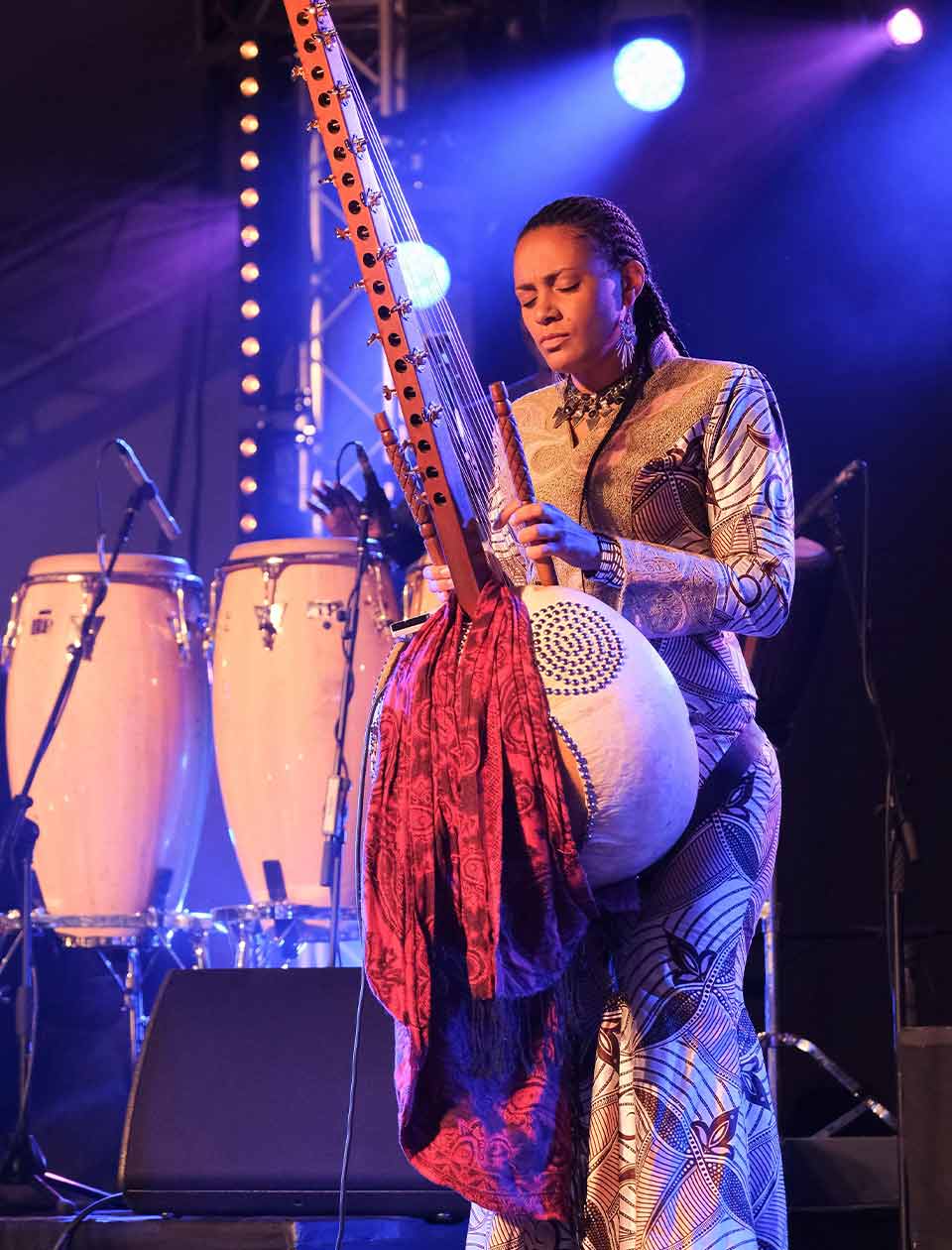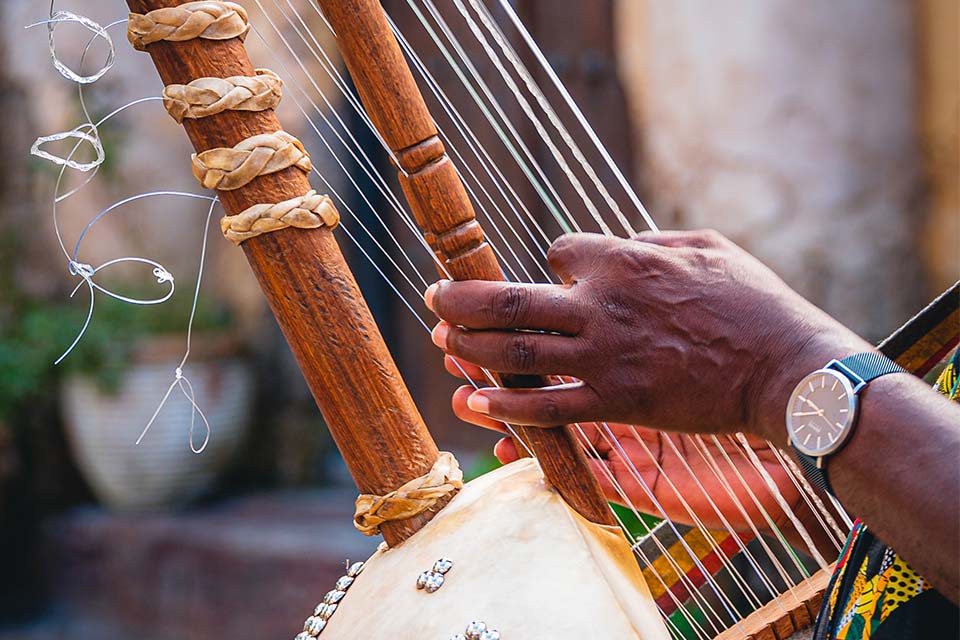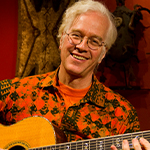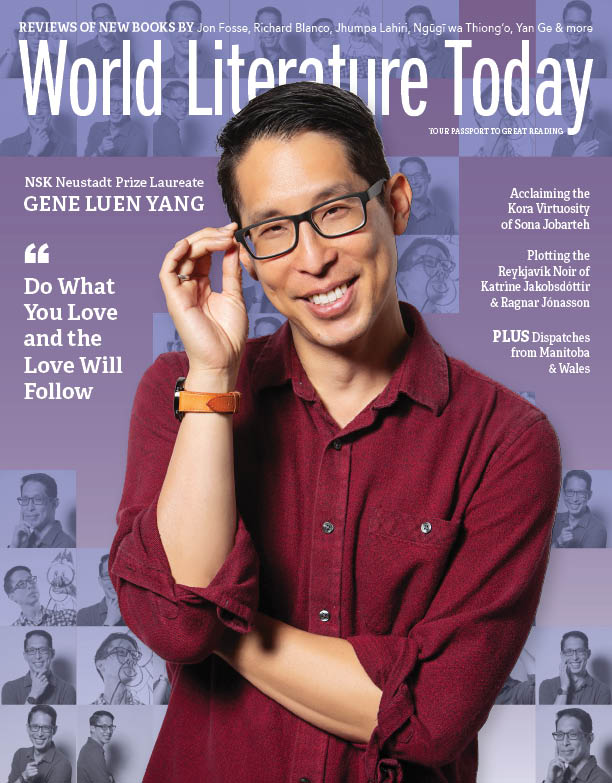Sona Jobarteh: A Singular Figure among Today’s African Artists

Sona Jobarteh, the first woman to achieve an international profile playing the kora, is a singular figure in the pantheon of twenty-first-century African artists. Read Banning Eyre’s profile of her here and then go online to listen to a playlist of her music.
Sona Jobarteh is celebrated as the first woman to achieve an international profile playing the twenty-one-string West African harp, the kora. But her uniqueness goes well beyond that. She was born in London in 1983 to an English mother, the painter and filmmaker Galina Chester, and a Gambian father, kora master Sanjally Jobarteh. Sanjally comes from one of the five main kora-playing families among the Mande griots of West Africa. Griots are hereditary keepers of culture and history. Their role in Mande society is deep and complex, but they are best known for musical virtuosity as singers and instrumentalists.
Sona’s grandfather, the late Amadou Bansang Jobarteh, was one of the greatest and most influential kora players of his generation. Sona only knew him when she was a child, during her regular visits to the Gambia. Her deeper education on the kora would come later, through her father. But Sanjally had other wives, and it’s fair to say that Sona grew up as much in the Western milieu of classical music, jazz, and pop as in the familial compound of traditional kora players. This bicultural identity, more than her gender, is key to understanding her singular position among contemporary West African musicians.
Sona grew up as much in the Western milieu of classical music, jazz, and pop as in the familial compound of traditional kora players.
Sona played the kora from childhood. She first learned from her brother, Tunde Jegede. Eleven years older than Sona, Tunde was born to Galina Chester and a Nigerian father. He went on to become an accomplished composer, taking the kora into the realms of classical, popular, and even Indian music. Following her brother’s Western-oriented lead, Sona studied cello, piano, and harpsichord at the Royal College of Music and then composition at the Purcell School of Music. During these years, she mostly set the kora aside. In a 2019 interview with Afropop Worldwide, she said that the two systems of musical education did not connect for her.
“It was very explicit,” she said, referring to her classical training. “If you want to pursue this, it has to be absolute. It was very much discouraged for me to show any interest in diversity. Not subtly, explicitly. I was told clearly that if I want to pursue this, I must leave other things behind. So it was a difficult time for me.”
Ultimately vexed by this dilemma, Sona chose the kora. She was seventeen years old at the time.
“I went to my father,” she explained. “He was living in Norway, and I asked him, ‘Will you teach me?’ He agreed, and we spent such intensive time just on the side of his bed for so long. I was studying and studying as much as I could.”
Sanjally offered scant praise to his daughter—“My dad is the older generation. They don’t say, ‘Oh, well done’”—but he made one thing clear. As Sona recalls, he told her, “Make sure you don’t consider the female thing. I’m going to teach you as my child, not as my daughter. This is me passing it on to the next generation. I want to make sure you become a good kora player. Not a female kora player, a good kora player.”
And she did. She also taught herself guitar and began writing songs, which featured on her debut album Afro-Acoustic Soul in 2008. But it was really with her second album, Fasiya in 2011, that she became the artist we know today.
“I see Fasiya as my statement,” said Sona. “I had been through so much, so many different avenues and paths and different possibilities to pursue. But this album resulted because I made the decision, consciously, to follow what is natural for me, and not to worry what the outcome is.” The word fasiya means heritage, specifically from the paternal side. The album features reimaginings of traditional Mande griot pieces, such as “Jarabi,” an iconic griot song championing a young woman’s right to marry for love rather than family politics. Sona forefronts her own words, melodies, and arrangements on this album, but the connections to the venerable Mande griot canon are evident throughout.
Traditionally, these canonical songs would be sung in the declamatory, full-throated vocal style of the great griot singers (jelimuso, if the singer is a woman). But Sona went her own way. “Lyrically, I didn’t want to sing jeliya like a griot,” she said. “I did not want to sing the stuff that has been sung a million times. It also wasn’t my vocal style. I was inspired by someone like [Malian singer/songwriter] Habib Koité. He brought composition to his vocal style.” Koité is another West Africa griot who has forged his own road as a musician, drawing from a variety of traditions to create a signature sound.
With Fasiya completed, Sona went about putting together a stage band. The group required musicians with deep knowledge of West African traditions as well as the ability to negotiate her complex arrangements, punctuated by fierce unison transition riffs, and lots of room for spontaneity. Onstage, Sona engages in lively improvised exchanges with her guitarist and percussionist. From the start, her show was nothing short of riveting and quickly won accolades from aficionados.

Onstage, Sona engages in lively improvised exchanges with her guitarist and percussionist.
“In my mind, I knew exactly what I wanted,” she said with characteristic assurance. “I knew what kind of musicians I wanted. But how do you find them? How do you get the right energy and the right syncing together? How do we bond on and off the stage? I went through many musicians over the course of four or five years. So many musicians!”
By 2015 she had her team: Mamadou Sarr on percussion, Eric Appapoulay on guitar, Andy Mclean on bass, and Westley Joseph on drums. Their chemistry is palpable in performance. The show has the feeling of both a family celebration and a showcase of virtuosity. Sona is tall, and she typically wears a tight-fitting gown onstage. Her appearance, including her finely braided hair, conveys a sense of complete control but also enormous freedom—yet another expression of her bicultural identity.
During these years, Sona worked with her father to set up a school in the Gambia, named for their most famous ancestor, Amadou Bansang Jobarteh. More than a music academy, the school is aimed at reinventing African education from top to bottom. For Sona, African education in general remains saddled with vestiges of the colonial era.
“We can’t talk about the challenges of entrepreneurship in Africa, migration in Africa, and dealing with leaders in Africa unless we really get to the core of what is going wrong with the education system,” she said. “At the moment there’s so much hype and push behind ‘build more schools, build more schools,’ but there are no questions about what those schools are doing. In the Gambia, for one, I could tell you that in every single situation we complain about, all the challenges that we face, there are elements that are born in the education system in the country.”
This educational mission became a key inspiration for Sona’s 2022 album, Badinyaa Kumoo. In a 2023 interview, she explained: “Badinyaa is connected with fasiya. Badinyaa refers to the mother figure, the role of the mother within the family unit. In Manding culture, that represents the unity you have between the children of that one mother. You know, you have different mother figures within the same family. But the unity between the brothers and sisters, even though they’re in the same family, is different for the brother and sister relationship when they’re from one mother. And kumoo is just ‘words.’ So if we combine those two things, it’s words of unity, but with all those different cultural elements behind it.”
For Sona, this album was a way of “closing the gap” between her musical life and her work with education. “The realm of education and all that other work doesn’t have much to do with music,” she said. “My main goal was to just be a little more honest about who I am, to be able to be confident, and to fuse those two spaces into one. That was probably the overarching aim of this album. From there, I was dealing with each track and what it represents, what I’m speaking about, and the artists I chose to work with in specific areas. That’s really how this journey was informed.”
The album is nothing if not philosophical.
The album is nothing if not philosophical, delving deeply into issues facing women, the problems with youth and education, what she learned from her key role models, and more. Musically, it incorporates new stylistic influences, including jazz and, in one song, the dominant pop style of Senegal and the Gambia, mbalax. The song is “Kambengwo,” meaning “unity,” and it includes guest vocals by the greatest exponent of mbalax music, Youssou N’Dour. Sona called it “the hardest song I’ve ever done in my life,” in part for musical and arranging reasons but also because the issue of unity for francophone Senegal, anglophone Gambia, and the southern Senegalese region of Casamance—a seat of Mande culture—has vexed generations in both countries since the drawing of European-imposed colonial borders in the late nineteenth century.
The song “Taariko” also deals with history. It uses the takamba rhythm popular among the Sonrai and Tuareg people of the Sahara and features the xalam lute and craggy voice of Zihirina Maiga. Maiga is Sonrai, and one of the last of his generation to sing in his style. All this fit the underlying idea of the song. “I was thinking of the sadness I feel with the neglect of African history,” she said. “There are absolutely amazing sites across the continent that are not known about by Africans or Europeans. People can go to Europe and be the first in line to visit the Colosseum or the Eiffel Tower, and yet they never even know about the existence of these types of monuments and sites we have in Africa that predate those by thousands of years.”
In 2022 Sona was profiled on 60 Minutes, a rare moment for a traditionally oriented African musician in mainstream American media. The piece focused on her virtuosity and included Lesley Stahl’s visit to the Gambia Academy. It was a tremendous boon to Sona’s career and a recognition of the unique place of African musicians in our globalized world. We live in a time when more commercial African popular music, especially Afrobeats from Nigeria and Amapiano from South Africa, are seeing unprecedented success. As welcome as this development is, it must not overshadow the work and contributions of more traditionally based artists like Sona Jobarteh. Her deep connection with West African cultural history and lifelong connection to Western culture make her a singular figure in the pantheon of twenty-first-century African artists.
Middletown, Connecticut











